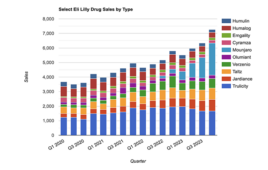 While a new generation of safer, more effective oral medications to treat hepatitis C patients may cost tens of thousands of dollars for a 12-week regiment, investing in these new therapies could generate savings estimated at more than $3.2 billion annually in the U.S. and five European countries, according to a new study (abstract 228) released at Digestive Disease Week (DDW) 2015. These savings would have a significant economic impact on society.
While a new generation of safer, more effective oral medications to treat hepatitis C patients may cost tens of thousands of dollars for a 12-week regiment, investing in these new therapies could generate savings estimated at more than $3.2 billion annually in the U.S. and five European countries, according to a new study (abstract 228) released at Digestive Disease Week (DDW) 2015. These savings would have a significant economic impact on society.The higher cure rate and lessened side-effects of treating patients with an all-oral combination of ledipasvir and sofosbuvir (LDV/SOF) results in greatly reduced absenteeism and improved workplace productivity that can translate into enormous benefit, according to the new economic model used by researchers at Inova Fairfax Medical Campus, VA.
“From a clinical standpoint, we’ve long known about the devastating health impacts that chronic hepatitis C has on a patient,” said Zobair Younossi, MD, chairman of the department of medicine at Inova and lead researcher on the study. “But given the significant side-effects previously associated with treating the disease, notably fatigue and neuropsychiatric side effects, we were interested in looking at the impact of new treatments on patients’ ability to work, and in a broader sense, how this effects employers and overall economies.”
Researchers used data collected from more than 1,900 chronic hepatitis C patients treated with LDV/SOF, which has a cure rate of between 94 and 99 percent with minimal side effects. Older traditional treatments that included interferon and ribavirin were less effective and caused a variety of side effects, including fatigue, as well as flu-like symptoms, depression and lowered blood cell counts.
Patients from the U.S. and Europe filled out questionnaires called the “Work Productivity and Activity Index – Specific Health Problems During Clinical Trials of LDV/SOF.” The retrospective study tabulated reported absenteeism, as well as what researchers called “presenteeism,” a measure of how productive an individual actually is while at work.
The researchers then built an economic model to estimate work productivity gains associated with curing genotype-1 chronic hepatitis C patients using LDV/SOF. The models were created for the U.S. and five European countries — France, Germany, Italy, Spain and the United Kingdom (EU-5). The results indicated that reduced absenteeism and increased productivity would total approximately $2.67 billion for the U.S. and $556 million for the EU-5.
Dr. Younossi stressed that while these preliminary results are encouraging, he plans to conduct further research to examine data outside of the clinical trial setting in order to evaluate the real-world consequences of a hepatitis C cure on work productivity and associated economic gains. He believes that researchers are beginning to see the bigger picture when it comes to the impact of hepatitis C, which can cause severe liver damage and other long-term health effects called the “extrahepatic manifestations of the hepatitis C virus.”
“Chronic hepatitis C is more than just a problem for the patient — it has a ripple effect that impacts society at large. While previous reports have found the cost of these drugs as certainly significant, the long term benefits of curing patients with hepatitis C makes this a worthwhile investment. We must begin to look at chronic diseases, such as hepatitis C, from every angle, which should inspire progress in developing more tolerable and effective cures,” added Dr. Younossi.
Source: Digestive Disease Week
Filed Under: Drug Discovery




